Metroid II: Return of Samus (Game Boy) Review
By Rudy Lavaux  30.11.2011
30.11.2011
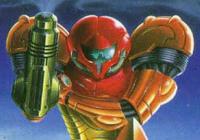
These days Metroid seems to be all over the place in Nintendo's schedules, with a new game in the series being released close to annually for the last ten years. During the second half of the 80s and throughout the 90s, though, only three games were released, each separated by several years of long absence from the stage. That's the background in which 1992’s Metroid II: Return of Samus was released, the first portable Metroid title and the long awaited sequel to one of the best and most praised games for NES. The original redefined what kind of non-linear structure side-scrollers could adopt, single-handedly giving birth to the side-scrolling exploration genre. How much did this game do for the series, and is it still worth your money today, now that it is easily available on the Nintendo 3DS Virtual Console service ? Let's dive into the depths of planet SR388 and find out.
After destroying the Space Pirate facility on planet Zebes in the first Metroid game, Samus looks to prevent Metroids, the vital-energy sucking alien lifeforms, from ever being used for evil purposes again. To do so, she travels to their homeworld, planet SR388, to eradicate every single Metroid in sight to conclude her adventure. This serves as the premise for Metroid II on Game Boy. Samus starts exploring the planet from its surface, delving down into the depths of its numerous caves and underground constructions, made by the Chozo race who previously inhabited planet Zebes, finding and destroying Metroids as she makes her way down. The caves are divided into areas which are all connected to a lava-flooded vertical main shaft. To lower the lava level, Samus must destroy all the Metroids contained within the latest accessible sector, which is either a section of the main shaft, or one of said areas connected to it. A counter visible on the small HUD at the bottom of the screen shows how many are left on the planet, and pressing the pause button tells how many she has left to beat until the lava level lowers so that she can continue exploring.
Similar to the NES episode, there's no map system in Metroid II; this feature only originated in Super NES’ Super Metroid. Consequently, exploring requires a good sense of orientation, because a tunnel can look a lot like any other in the game; the lack of colours or any real distinctive features, other than the general layout of the room, make it difficult to differentiate one location from another. Having a map downloaded from the internet can help alleviate this, but that wasn't possible back when the game was first released, so you had to buy an expensive magazine or game guide to help out.

Thankfully, now being released on the 3DS Virtual Console, you can make a quick sketch of the general map in the system’s notepad so you have it with you wherever you take your console or, even better, if you have Wi-Fi available around you, you can display a detailed map of the game in the web browser to help you find your way around the planet. All that being said though, the lack of a map in-game was a serious flaw in the original release, only slighted lessened now by these added functionalities of modern hardware.
The areas are varied enough so that the whole game doesn't feel too repetitive. To change things up even more, the Metroids come in different forms. According to background information, Metroids living and growing up on their homeworld go through several transformations, from the regular Metroids as we know them from the NES outing, to the alpha, beta, gamma, and omega forms, all increasingly aggressive and harder to defeat, enduring more missile damage, until it leads up to an epic last encounter against a final form.
Samus will often encounter obstacles that prevent her from progressing further, such as inaccessible platforms, spikes on walls or bomb-able walls, until she has the right piece of equipment or weaponry to advance further and kill more Metroids. Metroid II is notable for giving birth to some of the most recognisable pieces of equipment the series has seen, such as the Space Jump that gives Samus the ability to rebound in the air indefinitely, pieces of armament the Plasma and Spazer beams, and a Morph Ball upgrade called Spring Ball that lets Samus jump while curled up without the need for bombs. The signature Morph Ball ability known as the Spider Ball was also introduced here, only to be abandoned again until its resurrection in the 3D episodes, starting with Metroid Prime on GameCube. It’s also worth noting that Metroid II is the first episode to directly name the different equipment upgrades on-screen when you pick them up, so you don't need to take out the game manual to know what you just picked up.
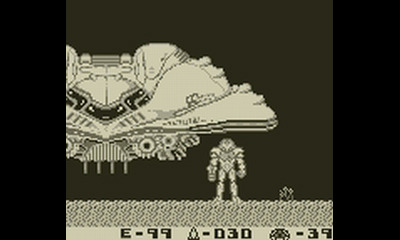
Unlike other Metroid games, the items necessary to broaden your equipment and reach those inaccessible places are always found somewhere in the same area. This negates the backtracking that existed in the original and later became a staple of the series in subsequent games. This makes Metroid II a more linear adventure, since there's no incentive for you to go back to a previously visited area to find more items, unless you forget an energy tank or missile expansion on your first visit. This doesn't make Metroid II any shorter than its predecessor though, because running from beginning to end takes more time, and this is helped by the labyrinthine structure of the individual areas, reinforced further by the lack of any map. Looking for the Metroids in every corner of the map the first time round may take you quite some time, and speed-running your way through it in less than three hours during subsequent playthroughs to get to see Samus remove her suit after the credits roll should be enough incentive for you to go back to it and try to beat your best time.
Metroid II also brought save points to the series. While a save function wasn't a first in the series - as this could already be found in the Japanese version of Metroid, released only for the Famicom Disk System - Metroid II did this for the first time in the form of different save stations scattered around the game world, whereas on the Famicom the save function only kicked in when you died, in the same way it did in both Zelda NES games, making the overall experience more enjoyable and playable in short bursts while on the go.
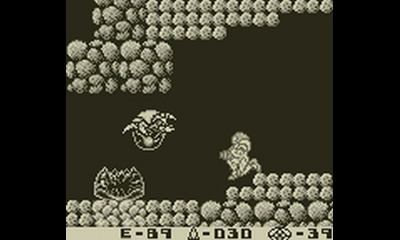
Due to its lack of colour, Metroid II doesn't look as good as the original Metroid on the whole. However, with the lower resolution of the original Game Boy screen forcing the developers to bring the camera view closer to the action happening on screen, more details can be seen in the different tiles that the scenery is made of, making up for the lack of colours a little. Actually, the monochrome of Game Boy is what pushed the developers to include more detail on Samus' suit, to reflect when upgrades have been acquired. The distinctive rounded shoulders of her Varia Suit, as we know it today, made their debut in Metroid II as a way to tell the player that it was equipped, replacing the simple palette swap seen on NES. According to Dan Owsen of Nintendo a colour version was planned for the Game Boy Color, akin to other DX re-releases such as Tetris DX, Super Mario Bros. DX and The Legend of Zelda: Link's Awakening DX. Apparently Nintendo even included a specific colour palette in the Game Boy Color hardware designed to help colourise the then-upcoming game so that it would look good on the system. Hackers managed to create a rather good looking colour version of it by patching the original ROM of the game, proving that it was entirely achievable on the hardware. Why Nintendo didn't release what they had planned is unknown.
The sound isn't the series’ best, with an unmemorable soundtrack. Composed by Ryohji Yoshitomi, it focuses on ambient sounds rather than music, and it's severely limited by the Game Boy sound hardware itself; it isn’t easy on the ears. On the other hand, it makes for a unique atmosphere on the whole that's not as dismissible as the sound quality itself. The catchy main track for the game, Surface Runner, is a memorable piece of music in the series, but alas, it's also pretty much the only one, along with the credits music, which is a step down from the incredible soundtrack of the NES original, composed by Hirokazu “Hip” Tanaka.
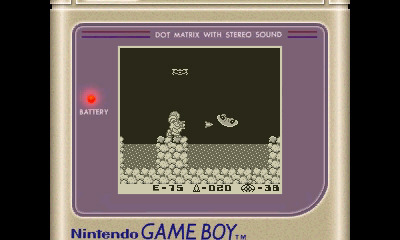
Cubed3 Rating
Great - Silver Award

While it wasn't the breakthrough in the franchise that Super Metroid went on to become, Metroid II: Return of Samus still brought at least as many new gameplay ideas and power ups to the series as the Super NES episode, many of which are still seen today in modern episodes. If only for that historical place in the series, Metroid II: Return of Samus is worth checking out. It's a really good adventure, and retains that desperate feeling of solitude from the original, reinforced by the ambient sounds and lack of music. It seems to be considered the weakest iteration in the series if the numerous polls that have happened over the years since its release are to be believed; however, that doesn't mean it's not worthy of diving into. Proof that it's still a worthy entry is that an enhanced remake of the game for the PC is currently under development by DoctorM64, under the project name AM2R, or Another Metroid 2 Remake, completely enhancing the original in the same way that Metroid: Zero Mission was an enhanced version of the original Metroid. The original, official version of Metroid II, though, is definitely worth a purchase on Nintendo 3DS Virtual Console for any fan of the franchise.
Comments
Comments are currently disabled

 Sign In
Sign In Game Details
Game Details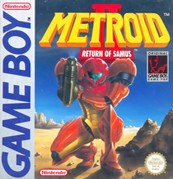
 Out now
Out now  Out now
Out now  Out now
Out now  Out now
Out now  Subscribe to this topic
Subscribe to this topic Features
Features





 Top
Top

